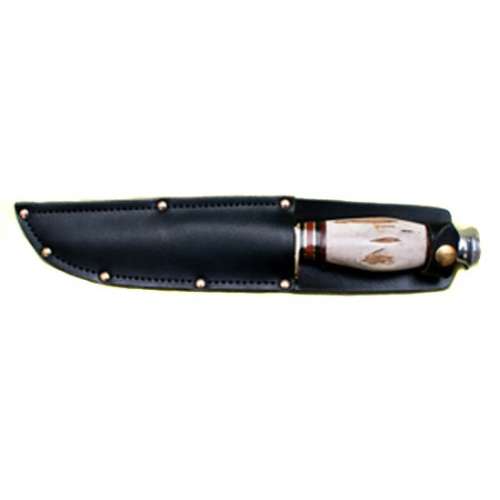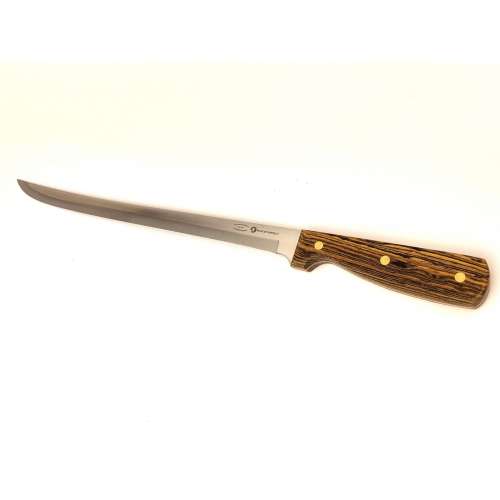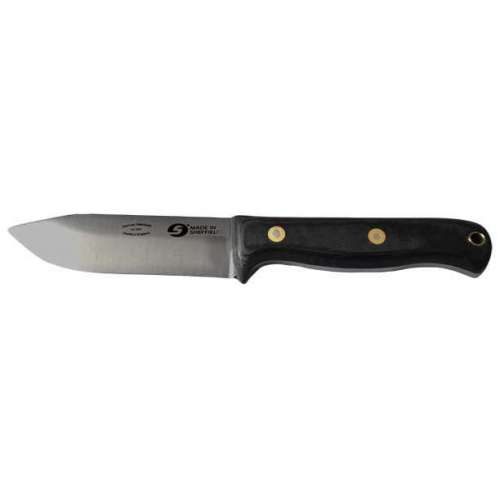No products
Product successfully added to your shopping cart
There are 0 items in your cart. There is 1 item in your cart.
Hunting Knives
A good hunting knife is a crucial part of your hunting and outdoor equipment. From our skillfully crafted Stag Handled Hunting knife to our general-purpose 6” bowie knife, we have a variety of hunting knives to cover a range of outdoor tasks. Whether you’re a seasoned pro or just starting out, we’ve got the right hunting knife for you!
Crafted ...
A good hunting knife is a crucial part of your hunting and outdoor equipment. From our skillfully crafted Stag Handled Hunting knife to our general-purpose 6” bowie knife, we have a variety of hunting knives to cover a range of outdoor tasks. Whether you’re a seasoned pro or just starting out, we’ve got the right hunting knife for you!
Crafted from the most sturdy and reliable materials, our hunting knives are extremely versatile and can be used for a variety of tasks in the wilderness. From chopping firewood to building huts, our hunting daggers are able to handle whatever Mother Nature throws at them.
History Behind The Hunting Knife
In this section, the experts at Samuel Staniforth outline the evolution of the hunting knife, from the time of the Egyptians to the current modern hunting knife.
Origins
Integral to human survival, the hunting knife’s origins trace back to the Stone Age. During this period, our ancestors chipped stones into blades to form tools for hunting and self-defence. Crafted from materials such as animal bone or shell, these early blades were honed to a razor’s edge using stones, a technique still used today.
Egyptians & Bronze Blades
Then came the ancient Egyptians who expanded the arsenal of hunting knives, axes and swords. Utilising wood for both blades and grips, they also introduced scabbards. These are the sheaths that protect clothing during blade carriage. Whilst longer spears were used for hunting, knives remained crucial for skinning and game preparation.
Greek & Roman Influence
With the rise of ancient Greece and Rome, bronze blades became prevalent throughout Europe and Asia. As the Romans conquered vast territories, steel blades gradually replaced wooden ones. In fact, steel is now the material of choice, playing a pivotal role in modern hunting daggers.
Jim Bowie
In the 19th century, Jim Bowie’s iconic knife emerged from a fight, becoming a symbol of close-quarters combat and hunting. Bowie’s blades, suited for varied tasks, inspired the design of modern hunting knives, characterised by an unswept clip at the tip of the blade.
For more information about this famous hunting knife, take a look at our 6" bowie knife.
Swiss Army Knife Revolution
The 1800s witnessed a revolutionary leap with the Swiss Army Knife. Although not initially designed for hunting, it eliminated the need for sheaths, offering a compact toolkit for various tasks. Many modern hunters rely on these versatile tools.
Modern Hunting Knives
Evolved from stone blades to technologically advanced tools, modern knives for hunting serve diverse purposes. From gutting and skinning to deboning and butchering, the functionality of hunting daggers has expanded.
Characteristics of a Hunting Knife
When it comes to selecting your hunting knife, here are some factors to consider:
Blade Type
A hunting knife has a smooth blade rather than a serrated one. This is because a serrated edge would rip through the meat and create a jagged cut, which is unacceptable for most hunters. Usually, the point of the cutting surface of a hunting knife is often rounded upwards, to prevent the knife from touching undesired parts of the meat.
Steel Type
Hunting knives can be made from different types of steel. Harder steel that stays sharp for longer can be chosen, or carbon steel that can easily be kept razor sharp (although slightly at the detriment of the rust resistance). At Samuel Staniforth, our hunting daggers are made using quality stainless steel, which has been heat treated to perfection. The result, a knife that holds a keen edge without chipping.
Protection
More often than not, hunting knives are supplied with a sturdy leather or nylon holster to be worn on a belt. This means that the knife is always at the user’s fingertips and can be safely transported without risk of loss in the field. At Samuel Staniforth, we ensure that our hunting knives come with high quality leather sheaths to keep them protected when not in use.
Hunting Knife FAQs
Why Buy a Hunting Knife From Samuel Staniforth?
Craftsmanship - At Samuel Staniforth, all of our knives for hunting are created using master craftsmanship. Our skilled artisans precisely craft each hunting knife using traditional techniques and modern precision.
Handle Design - Our Smithfield knife features a handle crafted from micarta, precisely shaped using CNC routing. Micarta is ideal for knife handles because it is lightweight, strong, dependable, good-looking, stable, and cost-effective. Alternatively, our Bowie knife and Stag Handled Hunting Knife are made using sustainably sourced stag handles.
Unmatched Blade Performance - Our hunting knives outperform the rest. Built for strength and durability, they can handle anything you throw at them. Created using high-quality steel, our knives for hunting deliver razor-sharp edges that retain their sharpness for extended periods.
Versatility - Designed to excel in all outdoor ventures, our hunting knives thrive in the wilderness. Whether it’s for camping, fishing or engaging in survival activities, our knives are built to tackle any challenge.
How Do I Care For My Hunting Knife?
To prolong the life of your hunting knife, we recommend that you carry out these simple care practices:
Regularly clean the blade with a soft cloth to remove dirt and moisture
Apply a thin layer of oil to prevent rust and maintain sharpness
Store your knife in a dry environment and avoid prolonged exposure to moisture
Sharpen the knife when needed using appropriate tools
Following these basic care steps will preserve the quality and longevity of your hunting knife.
Do Hunting Knives Need To Be Sharpened?
Yes. A hunting knife that is not sharp enough will be pretty pointless in the wilderness. On top of this, a dull hunting knife requires more force, risking slips and injury. We recommend that you regularly sharpen your hunting knives as it ensures clean cuts, reduces spoilage and makes processing your game safer and easier.
To find out more, take a look at our range of sharpening tools at Samuel Staniforth.
How Will The Design of Hunting Knives Affect Their Performance?
The design of a hunting knife significantly impacts its usefulness. In fact, blade length directly impacts cutting power for big game compared to manoeuvrability for small prey. Grip material affects control in different conditions. For example, in wet weather. Finally, a full tang adds strength to heavy-duty tasks like chopping. Consequently, it’s important to consider the different design choices before selecting your hunting knife.
Alaskan Filleter 10 inch Flexible Blade Alaskan Filleter 10 inch Flexible Blade
Alaskan Filleting Knife - 10 inch - Flexible Blade Zebrano Handle with Brass Rivets Alaskan Filleting Knife - 10 inch -...
In Stock
Categories
Wishlist
Information
New products
-

16" Double Handled Cheese Knife / Cake Knife / Pizza Knife
16 Inch Double Handle Cheese / Cake knife / Pizza knife X50 Stainless...
£ 60.00









